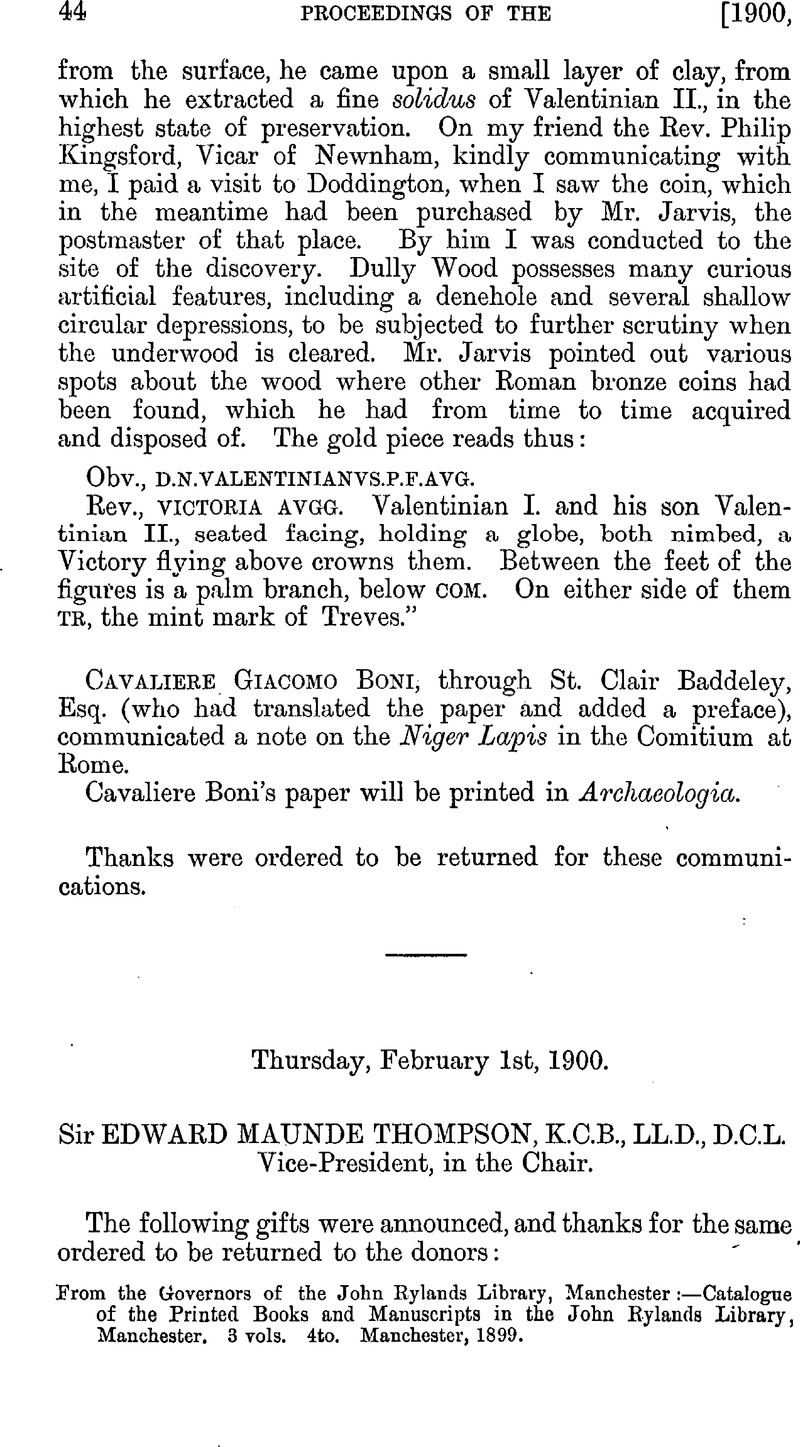No CrossRef data available.
Article contents
Thursday, February 1st, 1900
Published online by Cambridge University Press: 10 May 2010
Abstract

- Type
- Proceedings
- Information
- Copyright
- Copyright © The Society of Antiquaries of London 1901
References
page 50 note * Scrope v. Grosvenor Controversy, i. 98 ; ii. 278.
page 51 note * Part iv. MSS. of the Duke of Rutland, i. 28–30
page 58 note * Testamenta Eboracensia (Surtees Society 4), i. 376.
page 58 note † A slab with the design inlaid with lead was lately found at Eastrington, also in the East Riding. Mr. E. Towry Whyte, F.S.A., has since shown me a sketch made by him of an incised slab at Wycliffe, Yorks, which has an inscription with inlaid lead letters on one side of a cross. A slab found at Bangor in 1895 has a rich cross, with a checker board of 16 squares laid on the shaft; the alternate squares of thia are filled in with lead. See Archæologia Cambrensis, 5th S. xvii. 31, 32.
page 59 note * Porrot, G. and Chipiez, C., A History of Art in Ancient Egypt. Translated into English by Armstrong, W. (London, 1883), i. 362–6Google Scholar.
page 60 note * I have quoted the dimensions given hy Baedeker, which are I think taken from Marriette.
page 62 note * An Appeal to the Antiquaries of Europe on the Destruction of the Monuments of Egypt, by Geo. 11. Gliddon, late U.S. Consul at Cairo. London : Jas. Madden & Co., Leadenhall Street, 1841.
page 62 note † A mamoor is a sort of inspector.




